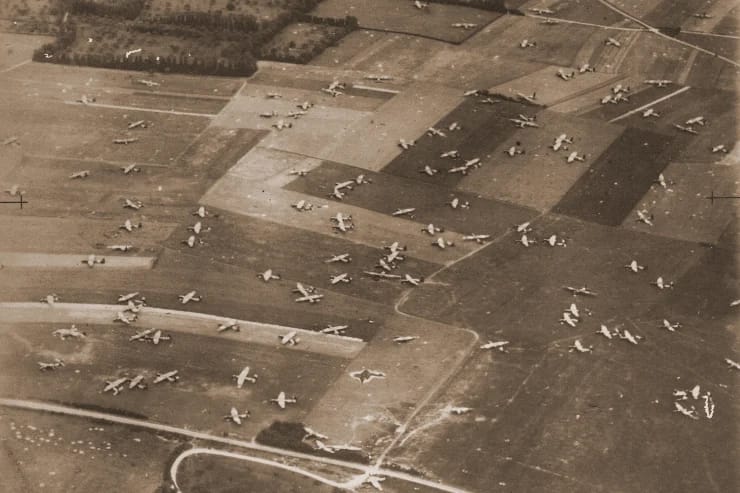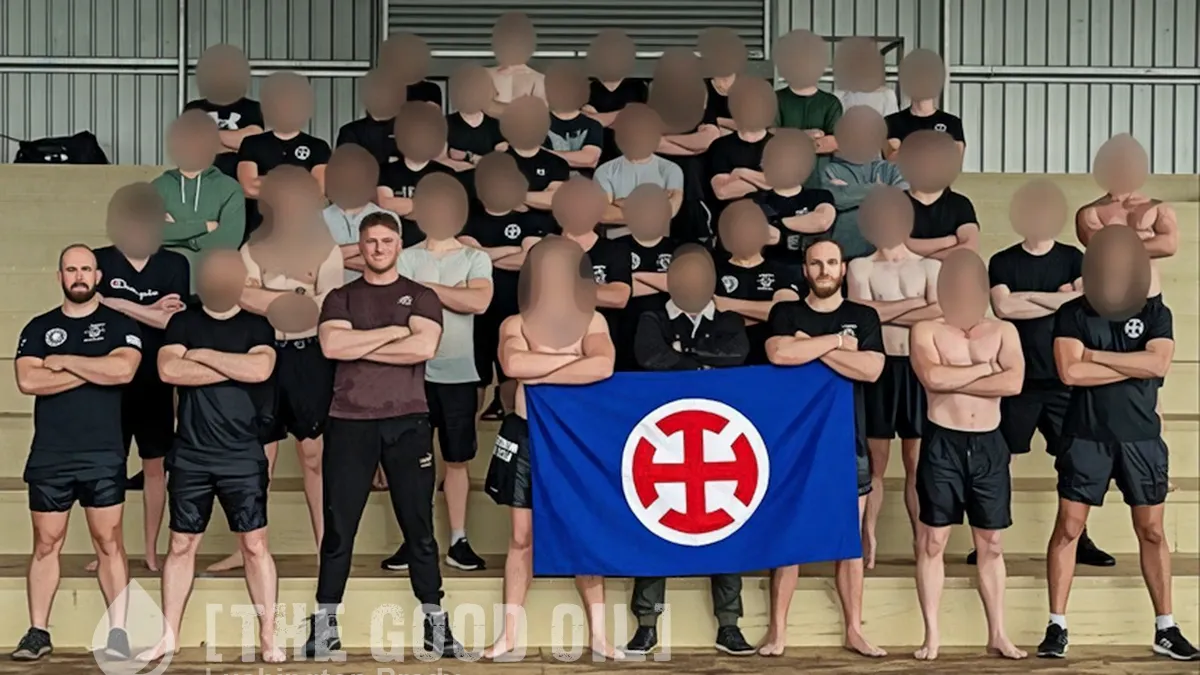Table of Contents
With the 80th anniversary this week of the D-Day invasion of Normandy, we’re once again reminded of just what a monumental undertaking it was. We’re all familiar, of course, with the images of landing craft hitting the beaches that morning, but the invasion had already begun hours before. At midnight, a heavy bombing campaign by air and sea opened the assault. Shortly afterward, thousands of paratroopers were dropped behind German lines along the French coast.
Many of them made the journey in gliders. The airborne assault was the culmination of months of training, conducted under strictest secrecy. Australian Frank Bladin was in charge of planning and training air crews to fly the hundreds of gliders into France.
Bladin, at the time an RAAF air commodore, was brought from Australia in late 1943 to become senior air staff officer of 38 Group, Royal Air Force.
It was a job like no other: to prepare to invade Normandy by clouds of gliders and US and British parachutists.
The gliders were not the sleek sports craft that dance the thermals today. They were big wooden contraptions, each capable of carrying 28 fighting men from the army, plus weapons.
They were towed by powerful warplanes, their pilots and navigators transferred from Bomber Command, many of whom were Australians, New Zealanders and Canadians flying alongside their British colleagues.
For a start, the D-Day task was completely opposite to much of their previous wartime experience. Rather than high-altitude bombing using navigational aids, glider-towing pilots had to be retrained to use land maps at night, take off towing heavily laden gliders and deliver them low altitude.
“We trained the hard way,” Bladin said in a speech in 1945. “Accurate navigation – ‘bang on’ is the air force slang – was our motto.”
Crews were trained in all weather over enemy territory, often dropping French resistance fighters and equipment by parachute.
At the same time, secrecy and deception were pervasive, in order to take the Germans as off-guard as possible.
Secrecy meant even the pilots and crews could not know where the D-Day landings would occur. A film was made of a model of the proposed landing sites so glider pilots could practise their final run, even if they did not know where it was.
The results were as bang on as Bladin could have hoped. The first gliders landing on Normandy just after midnight, by the light of a half-moon, were so unerringly piloted that one actually slid through a fence surrounding a German position.
They disgorged their fighting men so fast that a canal crossing known as Pegasus Bridge, critical to protecting Allied troops during the coming beach landing, was captured before the German defenders had time to react.
Bladin, like celebrated American Air Force leader Curtis LeMay, lead from the front. After monitoring the first wave from London, he rushed to an airfield in Dorset to board a Halifax bomber towing a tank-laden glider in the second wave of the assault.
“As our British aircraft swept away from our eight airfields, the air space to the west of us [was] filled with the American aircraft carrying the US airborne divisions.
“It was like watching hordes of flying ants swarming out of the ground on a hot, sultry Australian afternoon in the bush […]
“As we crossed the beach, we could recognise our target areas – the landing zones began to show up,” Bladin wrote.
“No longer spectators, we became participants. We were holding a steady course, nearing the point where we would cast off our gliders. In the lead aircraft we were attracting the attention of an anti-aircraft gun mounted on a German barge in the Caen Canal below us.
“The lead aircraft is usually a bit safer than the one further back, and so it proved, for one of the following aircraft went down. Just at that moment, a Spitfire hurtled down past our nose, and the anti-aircraft gun ceased firing and toppled into the canal.”

After the gliders were released, the towing bombers returned to England, where ground crew presented Bladin with a hand-made medal, inscribed, “For Tuggery, Bushman Bladin, 6-6-44”.
From this, he learned he was known among the crews he had trained as “Bushman” or “Bushranger” for his “stand and deliver” attitude.
The Age
Bladin went on to lead a long and distinguished career, including being promoted to air vice-marshal of the RAAF. But nothing, surely, would ever top his role in the greatest air- and sea-borne invasion in history.
The exploits of these heroes should never be forgotten.








